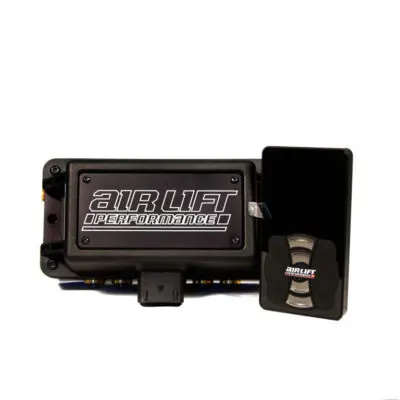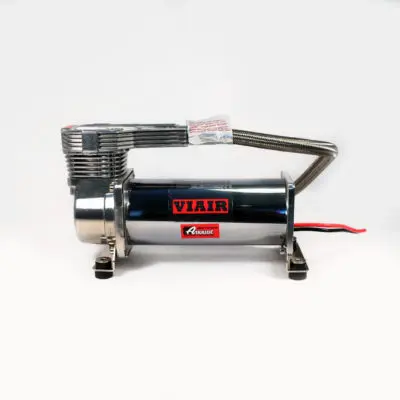At AirRide, we're air suspension experts, with more than 20 years' experience in the industry. If you're not quite as clued up as us, then we're certainly happy to help. For instance, if you don't have much idea what air suspension is yet, you might find this helpful... (If you do know what air suspension is but want to learn more then scroll down - we've got loads of great blogs and videos below.)
So, what is air suspension all about?
It basically involves replacing the standard string that all vehicles have with an air spring (or air bag) or, in the case of some heavy vehicles, installing an air bag in addition to the original spring to offer support to the existing suspension.
Fitting your vehicle with air suspension means you can manually alter the pressure in your air bags to raise or lower your vehicle as much as your want. Or, if you fit air to a van or motorhome, you can alter the pressure to ensure that your height remains the same, no matter the load.
What is an air bag?
Air bags come in many shapes and sizes but we mostly use double-convoluted bags (see below). These have a good range – from fully-up to fully-down of about five inches – although the vehicle is normally driven at a height towards the upper two thirds of that range. The bags must be fitted by brackets, as they bolt onto a flat surface and the original springs do not. In the front of a front-wheel-drive car, a different approach is needed as the airbag must surround the damper for the suspension to function.

Solenoids open up a number of control possibilities. The most basic is again a simple electric-window switch – up is up/down is down – and you can stop the car anywhere you want in between the two.
They can also come in a ten-switch box, which gives the ability to lift and lower the entire car in one hit, and is often fitted on a long lead, so it can be operated from outside the car.
We also sell a digital computer controller, which allows the entire vehicle to be adjusted in one hit to fivepre-set positions. These are normally set to fully-down, drive, fully-up and two others but can be set to anything you want.
Another major benefit to the computer system is that it can be controlled with a phone app, either on Apple or Android. The app is free, has lots of different functions, and means you don’t have to bother with a controller.
If you want any further information on air suspension or the kits we sell for cars, vans and motorhomes, then give us a call on 0800 7720315 or e-mail at enquiries@airride.uk.

Where does the air come from?
We supply compressors (effectively pumps) that fill an air tank with air at a pressure between 130 and 200 PSI. The compressor is powered from the car battery.
With motorhomes, caravans, and basic van kits, you can to go to a workshop or petrol station and use a tyre inflator to fill the system with air – this is great for a van or motorhome needing a fill once a month or so but we would always recommend a compressor to ensure you never run out of air.
The less-basic van systems can use a very small compressor with no air tank, and the compressor pumps up the bags directly. Again though, ideally it is best to have both a compressor and an air tank.
If you have air bags on all four corners of your vehicle you should always fit it with a compressor.
How is air controlled?
The most basic air control system is a simple mechanical paddle, like an electric window switch, which basically opens and closes a tap to let air in and out. This is unsophisticated and very slow, but it is reliable and is the system of choice on vans for load-levelling and load support. These systems typically take between 20 seconds and five minutes to lift the vehicle.
Alternatively, you can use solenoid valves. These are again basically taps that open and close but solenoids are electrical.
